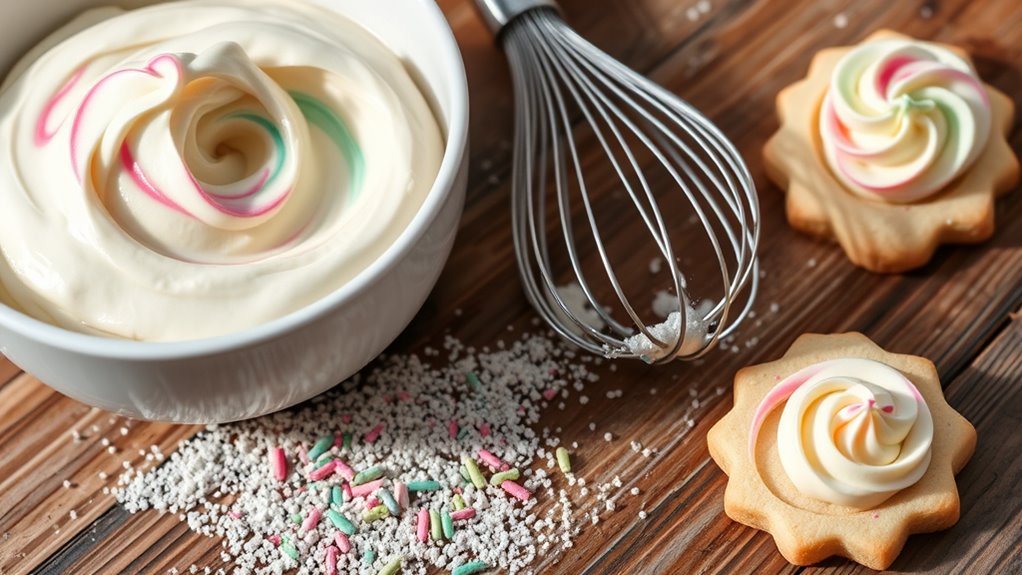You’ll need 2 cups powdered sugar, ½ cup unsalted butter at room temperature, 1 tsp vanilla extract, and 2-3 tbsp milk for smooth, spreadable sugar cookie frosting. Start by creaming butter well, then gradually blend in sugar to avoid graininess. Add vanilla and milk incrementally for desired consistency. Use piping bags or spatulas for neat application, and keep cookies at room temperature to maintain frosting texture. For expert tips and variations, explore further detailed techniques.
Ingredients and Quantity
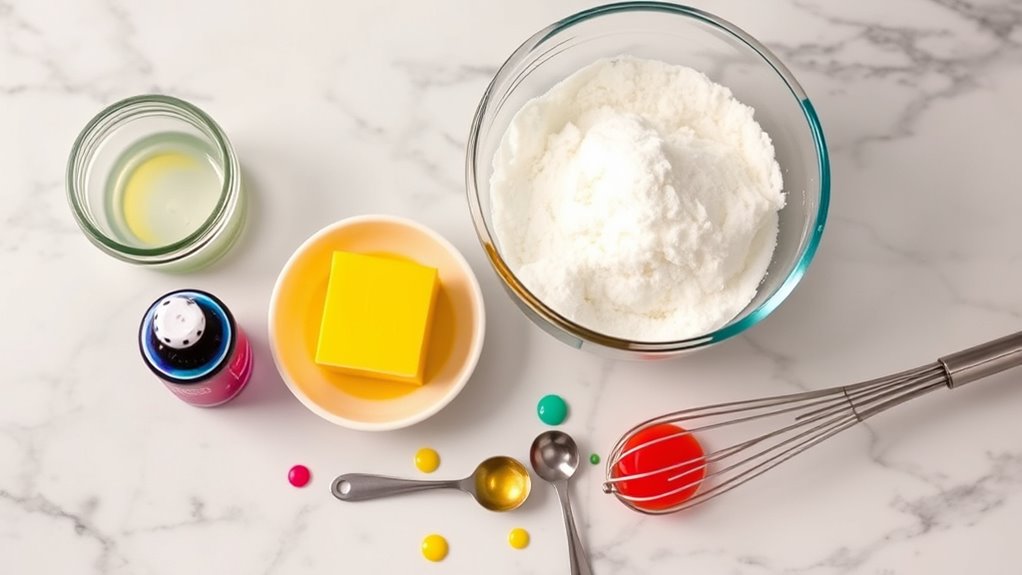
To make the perfect sugar cookie frosting, you’ll need four key ingredients measured with accuracy: powdered sugar, unsalted butter, vanilla extract, and milk. Precision in these quantities guarantees consistency across varieties of frosting, from creamy to stiff textures. Common substitutes like margarine for butter or almond milk instead of dairy can alter taste and texture, so measure carefully when experimenting.
| Ingredient | Quantity |
|---|---|
| Powdered Sugar | 2 cups (240g) |
| Unsalted Butter | 1/2 cup (113g) |
| Vanilla Extract | 1 tsp (5ml) |
| Milk | 2-3 tbsp (30-45ml) |
Preparations
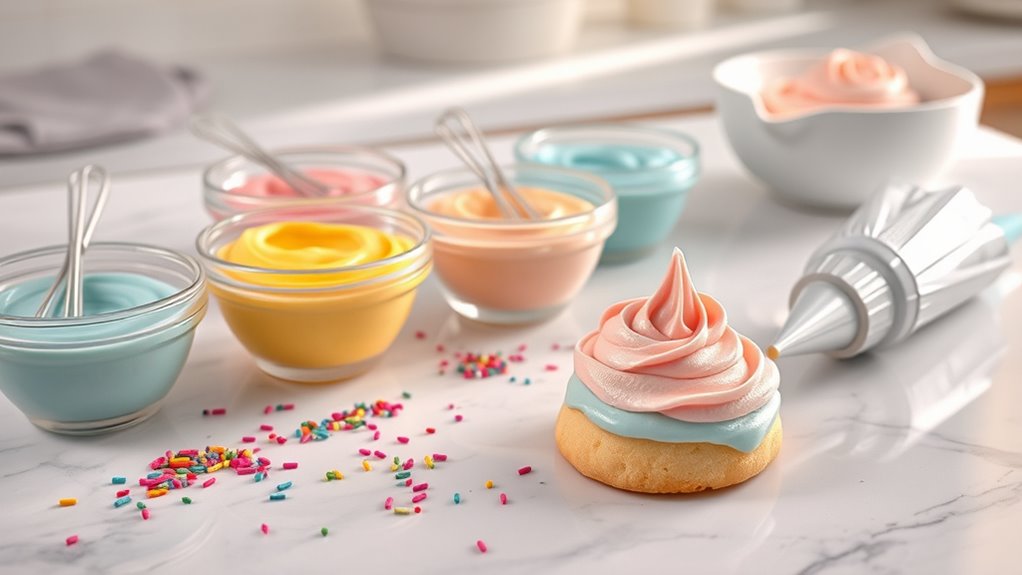
Before you begin mixing, verify all ingredients are at room temperature to achieve a smooth, consistent frosting. This step guarantees ideal integration, preventing clumps or separation that compromise frosting consistency. Measure powdered sugar precisely; slight deviations affect texture and sweetness. Prepare your workspace by sifting sugar and pre-softening butter or cream cheese to a spreadable state. When considering flavor variations, decide now whether to incorporate extracts like vanilla, almond, or citrus zest. This early decision allows even distribution and balanced flavor profiles. Also, have your mixing tools ready—preferably a stand mixer with a paddle attachment for uniform aeration. Proper preparation gives you control over the frosting’s final texture and taste, empowering you to customize without sacrificing quality or freedom in your baking process.
How to Prepare
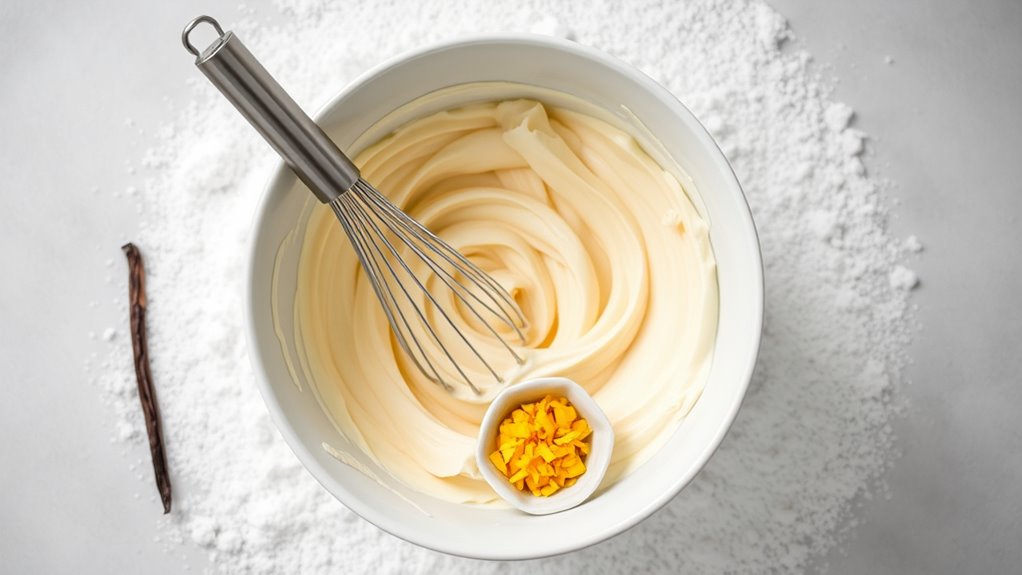
- Begin by creaming the softened butter or cream cheese with a mixer on medium speed until smooth and fluffy, typically about 2 to 3 minutes.
- Gradually add powdered sugar, blending thoroughly after each addition to avoid graininess.
- Incorporate a pinch of salt and vanilla extract to balance sweetness and enhance flavor.
- Adjust consistency by adding milk or cream incrementally, aiming for a spreadable yet stable texture.
- Use precise frosting techniques—such as folding or beating—to aerate without overmixing, preserving structure.
- For flavor variations, consider substituting vanilla with almond or lemon extract, or infuse zest for brightness.
- Always scrape the bowl sides to guarantee uniform mixing.
- This method grants you control over texture and taste, empowering you to tailor your frosting freely to complement your sugar cookies perfectly.
How to Serve
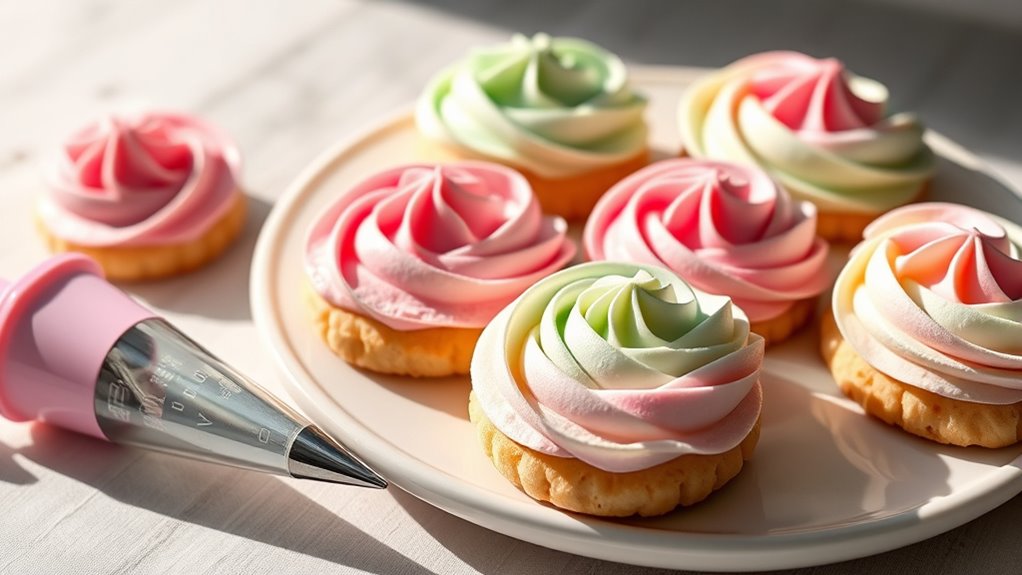
Once your frosting achieves the ideal texture and flavor balance, focus shifts to its application and presentation. To serve sugar cookies with frosting effectively, consider presentation ideas that enhance visual appeal and ease of handling. Use a piping bag with a fine tip for precise, uniform designs or a spatula for a smooth, even layer. For serving suggestions, arrange cookies on a flat platter lined with parchment to prevent sticking and facilitate easy picking. You might group cookies by decoration style or color to create an organized, attractive display. Keep the cookies at room temperature to maintain frosting consistency, avoiding refrigeration that can harden the frosting. These technical steps guarantee your serving method complements both the frosting’s quality and your guests’ freedom to enjoy.
Tips
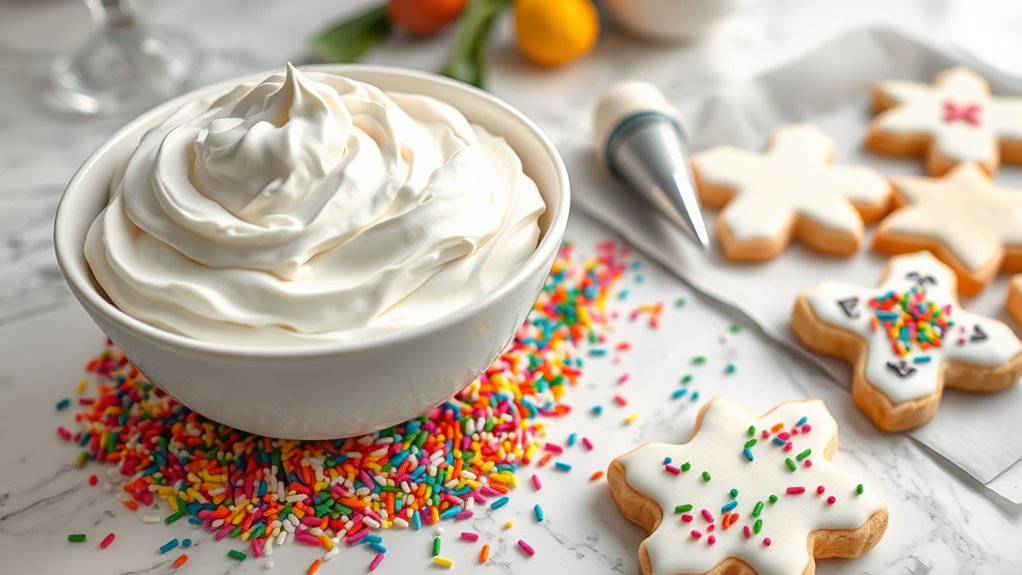
Although frosting sugar cookies may seem straightforward, mastering a few key techniques can greatly improve your results. First, focus on achieving the ideal frosting consistency: it should be thick enough to hold its shape but soft enough to spread smoothly. Adjust with small amounts of milk or powdered sugar to fine-tune. Next, practice precise decorating techniques—use piping bags with different nozzles to create sharp edges or intricate designs. When layering colors, allow each layer to dry slightly to prevent bleeding. Also, work in a cool, dry environment to avoid frosting melting or becoming too stiff. Finally, don’t rush; steady hands and patience are essential. By controlling these variables, you gain freedom to customize and elevate your sugar cookie presentation with confidence.
Food Value and Benefit
Sugar cookie frosting, when prepared with mindful ingredient choices, offers more than just sweetness and decorative appeal. A traditional frosting is typically high in sugar and fats, providing limited nutritional benefits. However, by using alternatives like powdered erythritol and coconut oil, the frosting can be made with lower calories and glycemic impact, making it a better option for those monitoring their sugar intake. Additionally, incorporating natural flavor extracts and unsweetened plant-based milk can enhance flavor while keeping the sugar content low.
Food Value of Prepared Sugar Cookie Frosting:
- Lower in added sugars when using sugar substitutes like erythritol
- Contains healthy fats from coconut oil
- Provides small amounts of vitamins and minerals depending on ingredients used
Vitamins and Minerals:
- Vitamin E (from coconut oil)
- Small amounts of calcium (from plant-based milk)
- Trace minerals like magnesium and potassium (depending on specific ingredient choices)
Benefits of Eating This Recipe:
- Reduced glycemic load supports better blood sugar control
- Healthy fats contribute to improved heart health and satiety
- Lower calorie content assists in weight management
- Provides antioxidants such as vitamin E that help protect cells from damage
- Customizable to accommodate dietary preferences such as vegan or low-sugar diets
